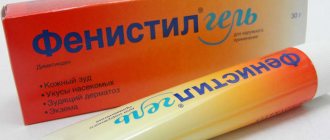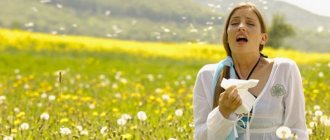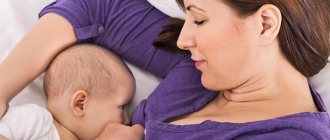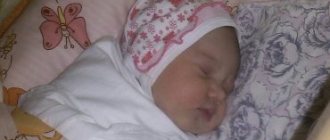During the period of maximum defenselessness of a woman’s body, that is, in the first year after childbirth, rhinitis and other phenomena of a viral, allergic or bacterial nature are a ubiquitous event that requires separate consideration. At the same time, a lot of questions arise: which nasal drops are allowed during breastfeeding and which are not?
How to choose an adequate treatment that does not contradict normal lactation? Are medications taken by the mother for a runny nose safe for a newborn? And, finally, how to treat a runny nose so as not to interrupt the baby’s natural feeding?
Breastfeeding and mother’s runny nose – is it compatible?
Despite the apparent danger of acquiring viral infection pathogens through milk, real circumstances reveal events of the opposite plan. The milk nutritional mass that the child consumes during the mother’s illness produces important antibodies that are responsible for the body’s immune response against the virus. These antibodies serve a dual purpose - they increase the resistance of the mother’s body and are laid down in the form of immune memory in the baby.
In other words, a runny nose in a nursing mother is not a reason to transfer the baby to artificial feeding unless a number of the following negative conditions are present:
- the disease, expressed by rhinitis, does not receive treatment, and therefore progresses;
- antibiotics or other drugs were prescribed with a note in the annotation about the inadmissibility of using the drug for hepatitis B;
- a runny nose is classified as an accompaniment of a disease incompatible with the continuation of natural feeding.
If a normal runny nose is not accompanied by other alarming symptoms (except for a rise in temperature, which is considered normal), then feeding must continue on the same schedule, which is very important to observe for the prevention of lactostasis. General measures to protect a baby from infection do not differ from the rules for preventing any respiratory diseases in contact with a sick person. This:
- frequent walks in the fresh air;
- an individual, well-ventilated room where the child will be most of the time;
- daily wet cleaning;
- hardening of the baby, according to the pediatrician’s recommendations.
Since the mother will have to treat a cold with constant contact with the child, she must wear disposable medical masks for the entire time that the newborn is nearby. According to the instructions, the mask is changed at least three times a day.
Causes
A slight separation of secretions in the nasal cavity occurs in every person to protect against viruses and bacteria. Removal of dirt occurs during sneezing. An increase in mucus volume indicates the appearance of an irritant or infection. In a nursing mother, a cough and runny nose can occur due to the ingress of viruses and bacteria, as well as as an allergic reaction to a pathogen.
With prolonged exposure to the irritant, rhinitis occurs due to the activation of rhinoviruses. The membranes of the passages become swollen and inflamed, mucus secretions become more frequent and may acquire a yellowish or greenish color.
Most often, a runny nose is caused by:
- Respiratory infections.
- Dry air.
- Damage to the nasal passages, including microcracks.
- Exposure to allergens.
To determine the exact cause of inflammation of the nasal mucosa in the mother and choose the right treatment that is safe for the child, you need to consult a doctor.
The first measures are rinsing
When the unpleasant symptom is only a few hours old and the nasal discharge has not yet turned into congestion, treatment of a runny nose during breastfeeding may be limited to one-day rinsing therapy. To get the optimal medicine, you don’t even have to go to the pharmacy - all you need is a quarter of a teaspoon of table salt in a glass of warm water, a disposable syringe (10-20 cubes) or a small syringe. If you don’t trust home remedies, buy an analogue of this solution prepared by pharmacists - it is sodium chloride at a concentration of 0.9%.
The liquid is collected into a rinsing device and injected into each nostril one by one over the sink. The washing technique is simple:
- bending over a sink or basin, turn the head so that the nostrils are almost in a vertical line;
- the tip of a syringe (without a needle) or a syringe with the liquid already drawn is inserted into the nostril and by gently pressing the piston (bulb), the solution is injected.
In total, you need to do from 4 to 6 washes per day. Each injection of the composition into the nasal canal should be accompanied by gargling with the same solution - this must be done even if the snot is not profuse.
You can use other solutions for washing, preparing them yourself:
- dissolve 2 tablets of furatsilin in 200 ml of hot water;
- For 200 ml of warm water, take 1 teaspoon (without top) of salt and soda, stir and finally drop 2-3 drops of iodine from a pipette.
In order to cure a runny nose in a nursing mother, you can combine safe ready-made solutions that are used in combination with sodium chloride 0.9%. This is Metrogil, Miramistin. They must be diluted with sodium chloride in equal proportions.
Treatment of allergic rhinitis
The surest way to get rid of a runny nose when feeding is to eliminate the allergen. To urgently relieve symptoms, drops with antihistamine effect Nasonex, Allergodil, Nazaval, Azelastine are used. The popular Suprastin and Tavegil will have to be abandoned during breastfeeding.
If you are prone to allergic reactions, it is important to monitor air quality. It should be fresh and moist to prevent drying out the nasal mucosa. When the air is dry, you can use saline solutions for washing - Nosol, Aquamaris, Salin.
Traditional therapy recipes
When using home remedies, it is important to understand that it is necessary to treat a runny nose in a nursing mother only in combination with drugs that eliminate the very cause of rhinitis by acting on the virus, while the use of drops is considered part of symptomatic therapy. It is not possible to influence a virus or allergen using traditional methods, so it is good if a woman chooses natural nasal drops during lactation:
- three-year-old aloe or Kalanchoe juice, squeezed from whole, intact leaves, is diluted with boiled cooled water 1:1 or 1:2 and this solution is instilled, 2 drops into each nostril 3 times a day;
- 1 tbsp. A spoonful of dry chamomile inflorescences is scalded with 200 ml of boiling water and left under the lid for 40 minutes. Use the cooled and strained decoction, 3 drops 4-5 times a day.
Since the nasal sinuses are almost always obstructed during a runny nose due to mucus accumulated there, instillations are carried out after thoroughly rinsing the nose with saline.
Stages of rhinitis
The course of the disease is divided into 3 periods, which transform into one another:
- Initial signs.
- Development of the process: serous discharge.
- Resolution of the disease: mucopurulent discharge.
The first symptoms of a runny nose are as follows:
- labored breathing;
- nasal congestion due to swelling of the mucous membrane;
- unpleasant sensations: dryness, tickling in the nose;
- loss of smell, decreased sense of taste.
Before it stops, a runny nose must go through all its stages, from nasal congestion to discharge.
By the end of the first - beginning of the second day, discharge appears. They are transparent, liquid, colorless and odorless. This is a response of the mucous membrane to the introduction of the virus. Sometimes they are compared to water. Watery eyes, sneezing, redness/conjunctiva of the eyes occur.
Approximately on the fourth day, the discharge thickens, first acquiring a gray, then yellow tint. The amount of discharge gradually decreases, swelling of the mucous membrane disappears, free breathing and sense of smell appear. With adequate treatment, complete recovery occurs within 7-10 days.
The addition of pathogenic bacteria changes the color of the discharge. They turn green with an unpleasant putrid odor. These manifestations indicate a pathological process in the sinuses of the nose. If purulent discharge is combined with pain or hyperthermia, immediately contact an otolaryngologist.
Reduced immunity and the presence of other diseases prolong the process, which enters the chronic phase.
What remedies for the common cold are acceptable during lactation?
It is enough to ignore a cold for two or three days, expressed by the primary symptom - a runny nose, and the disease passes into the next stage. The mucus coming out of the nasal canal changes its consistency to a denser one, breathing becomes difficult, and general nasal congestion leads to coughing. In this situation, you have to turn to pharmaceutical agents with vasoconstrictor, antimicrobial and moisturizing effects. If a woman is treating a runny nose during lactation without seeking medical help, then it is important to carefully read the annotation of each medicine offered at the pharmacy.
Some products are considered safe for nursing mothers, but contain a large range of medicinal herbs that can trigger allergies (for example, Pinosol).
So how to treat a runny nose while breastfeeding?
Vasoconstrictors
The classification of Russian nasal drops with vasoconstrictor properties, approved for use in nursing women, differs significantly from that accepted by international standards. Thus, in the table of our approved drugs “Naphthyzin” is listed, and international experts are wary of it, as they are of other drugs created on the basis of naphazoline.
Medicines for the treatment of runny nose during breastfeeding should contribute to the rapid restoration of a woman’s normal well-being with minimal possibility of developing side effects. The following active elements included in nasal preparations answer these requests:
- Phenylephrine - included in Nazol and Vibrocil drops. Products with this substance as the main element are allowed even for the smallest children;
- Oxymetazoline is responsible for the action of Nazivin and Rinazoline. It is not recommended for use only in cases of diagnosed heart and vascular defects in mother and baby. It is allowed to treat rhinitis with oxymetazoline drops without interruption from feeding for 1 to 3 days;
- Fluticasone is the drugs “Nazarel”, “Flixonase”, characterized by minimal absorption into breast milk. This remedy is effective for allergic and cold rhinitis.
Despite the positive reviews from doctors about the action and safety of each of these drugs for a nursing woman and her child, it is better to use pharmaceutical products for rinsing the nasal sinuses and subsequent instillation immediately after putting the baby to the breast. Thus, by the time of the next feeding, the concentration of the active substance of the drug in milk will decrease to a minimum threshold.
Antimicrobials
Strong allergens are often found in the compositions of antimicrobial agents, so the use of such effective, but multicomponent natural preparations should be treated with caution. The most optimal herbal remedy for mothers who are not allergic to medicinal herbs is Pinosol.
Another option for antimicrobial treatment of a runny nose can be essential oils added to hot water for inhalation. The following oils have the properties of stopping the activity of microbes, as well as thinning and removing mucus from the nasal passages:
- tea tree;
- caraway;
- sage;
- anise
There is no need to get carried away with hot inhalations, as this dilates blood vessels and can lead to unpleasant consequences. Two procedures per day, 8 hours apart, are considered sufficient.
Moisturizers
Products for moisturizing the mucous membrane are usually available in the form of sprays that evenly irrigate the inner surface of the nose. Among these are “Nasol”, “Aquamaris”, created on the basis of water with sea minerals. Before treating a nursing mother's runny nose with any of the nasal moisturizing preparations, only one condition must be met - make sure that the runny nose is not allergic in nature. Otherwise, you can only get temporary relief, but not a way to combat the symptom.
We should not forget that a nursing mother needs not only to fight the signs of an incipient disease, but also to constantly stimulate the immune defense. Drops will relieve swelling and help stop the flow from the nose, but rare exposure to air, poor nutrition and poor sleep will repeatedly return the need for more and more recourse to medications.
Should you stop breastfeeding?
During illness, a nursing mother is not recommended to wean her baby from the breast. On the contrary, it is even useful for the child. When a woman has a cold, her body produces antibodies that are released into the milk. And after feeding they protect the baby from illness.
Breastfeeding with a runny nose is not a contraindication. When the disease corresponds to the first level of danger, contacting a doctor and following all safety measures will protect the baby and quickly return to shape.
At the initial stages, you need to do rinsing and adhere to the drinking regime . If the disease becomes more complex, then the use of medications under the supervision of a specialist is required. Self-medication is unacceptable, as it can not only aggravate the situation, but also harm the child.
Safe drops and sprays for mothers
All medications must be approved by a doctor!
Having identified the development of a runny nose, a nursing mother must accurately identify the cause of its appearance and, first of all, influence it with safe methods during the lactation period.
The congestion itself should be eliminated comprehensively, acting through:
- Taking appropriate medications and other symptom-relieving agents.
- Organization of favorable environmental conditions (normal humidity, plenty of fluids, etc.).
- Increasing immunity using accessible methods (from drinking vitamin teas to taking immunomodulators).
In principle, with the last two measures everything is extremely simple and clear, but what drugs can be used to get rid of a runny nose during lactation? Actually, many, but first things first. Let's start with safe drops and sprays.
The most preferable option would be a combination of two types of drops or sprays, to be more precise we are talking about vasoconstrictors and drugs with general effects (relieving inflammation, swelling, strengthening the immune system, etc.). Therapy with the first medications should be carried out for no more than 5 days and used exclusively to alleviate the general condition of the mother.
More folk recipes for a runny nose can be found in the video:
Valid and effective vasoconstrictors during lactation include:
General purpose drugs are usually prohibited or undesirable for use during lactation. Perhaps one of the few drops of this kind that a nursing mother can use without a doctor’s prescription is Pinosol. This drug is made on a plant basis, is harmless and non-addictive, therefore safe during the lactation period. Acting comprehensively, Pinosol reduces inflammation, relieves swelling, fights unfavorable microflora and strengthens the local immunity of the nasopharynx.









